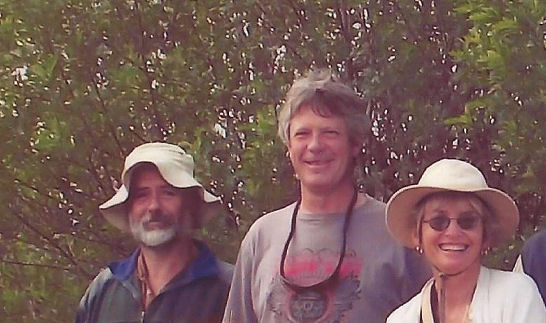Mr. Berrington
2001
William Massyn retired and Wesley Berrington got appointed as manager.

Wesley Berrington was a conservation officer.
Due to a disagreement the aviary got closed down.
Up to now maintenance was subsidised by schools, farmers, universities etc. as otherwise there was not enough money to do all the work. Though this seems to have slowed down to no help at all anymore.
Squatters started to move into the workers houses that stood empty alledgely because of political interference.
Compromise reached to avoid building of houses in the reserve?
The section from the lower bridge to the railway bridge was walked to investigate the possibility of an eco-touristm trail. It was however too infested with aliens, mainly wattles, to make it feasible.
The management of the reserve was transfered to the Port Elizabeth municipality.
In June there was the final Arbor day plant sale and after that all the plants got moved to the Peter Gibbs municipal nursery and the nursery at Van Stadens Wild Flower Reserve ceased to exist.
With the take-over most trucks, wagons and lots of equipment disappeared and left the reserve with only very bare necessities.
2003
The last controlled burning was done.
Wesley Berrington got advise from a Professor to let the reserve turn back to its natural state and no more planting was to be done. The idea being that the reserve would revert to its natural state by itself. Unfortunately many introduced plants are very happy and outcompeted the local indigenous plants.
2005
Wesley found the Euryops ursinoides and the Aster laevigatus and got SANBI’s interest and now started taking photos of special plants in the reserve and Lady Slipper mountain for their records.
Subsequently he wrote, together with Tony Dold from the Albany herbarium, an article in the Veld and Flora which got published in December.
His budget got very small and therefore could not do much work.
2006
The entire reserve, apart from the forest burns.
Wesley was very involved with seeing to rescuing of plants .Also more emphasis was laid on the protecting of endemic plants in the reserve.
Wesley Berrington started up a project to protect the van stadens corridor to help protect the “exeptional conservation value” of the Van Stadens River gorge.
Project manager Wesley Berrington, who was the manager of the municipal Van Stadens Wild Flower Reserve, said the aim was to “galvanise the support of property owners to create a corridor of natural vegetation from the Van Stadens River Mouth up the gorge into the Van Stadens mountains”.
There are 11 plant species in the corridor which are endemic – meaning they occur in the Van Stadens area and nowhere else on earth.
Among these species is Aster leavigatus, a little white or mauve daisy first discovered in the early 1900s. A single specimen was taken to London and preserved in the Kew Gardens herbarium.
The species then disappeared from the wild until three years ago, when it was rediscovered in large numbers in the Van Stadens mountains by Berrington, after the fires which swept the area.
It has since disappeared again, but its seeds were clearly in the area waiting for the right fire trigger, Berrington said.
The core nodes of the envisaged 20km corridor already under conservation are the municipality‘s Van Stadens Wild Flower and Lady‘s Slipper nature reserves.
The land is generally not only of high conservation value, but also of low agricultural value. A variety of low-key enterprises, notably grass farming, are interspersed with large tracts of uncultivated land either still covered in indigenous vegetation or invaded by alien bush.
The project is aimed at encouraging especially the owners of unspoiled natural land to set their properties aside for conservation purposes.
“Benefits to those who sign on include management support from the municipality, provision of biological details pertaining to their properties and possible eco-tourism opportunities like hiking trails or tea gardens that capitalise on natural scenery.
The Van Stadens conservation corridor includes about 23 private landowners and of these six have already signed on and four more have committed themselves verbally.
The agreement calls for signatories to work in conjunction with the NMBM‘s environment unit to “retain and protect the natural state of their land”.
“Plants disperse their seed via wind, water, insects and birds and mammals that eat their fruit. If populations of a species are cut off by agricultural land, their numbers can dwindle. Animals like leopards and baboons rely on uninterrupted access to get to different food sources.”
Unfortunately the project eventually fell apart.
2010
Wesley finds the Erica sagitta again though no GPS point.
2012
Sadly in July Wesley Berrington suddenly passed away!
